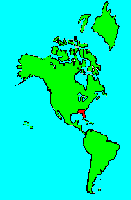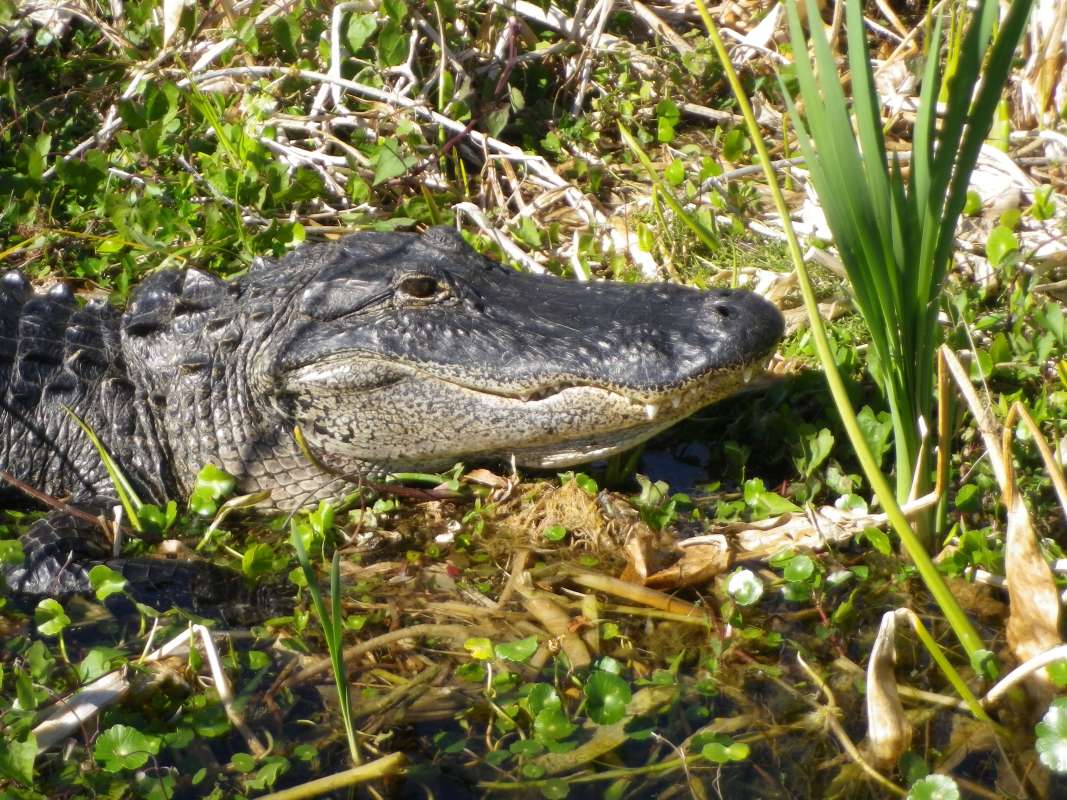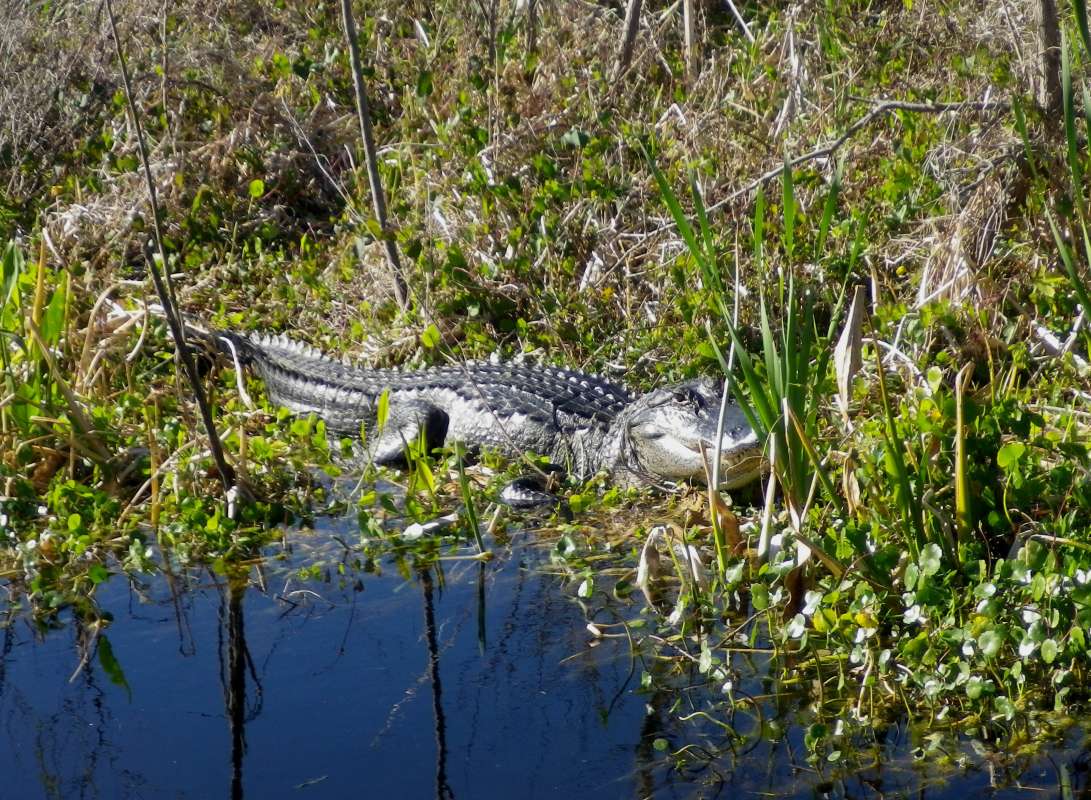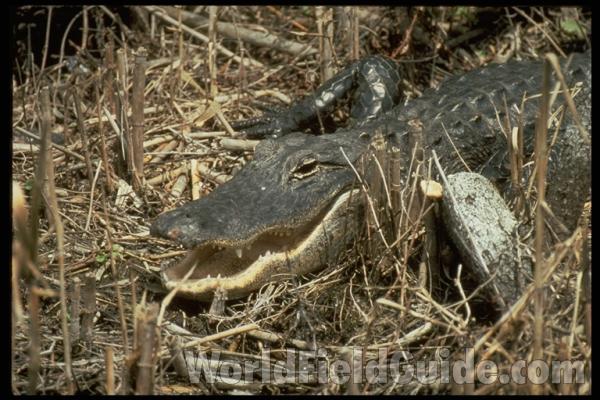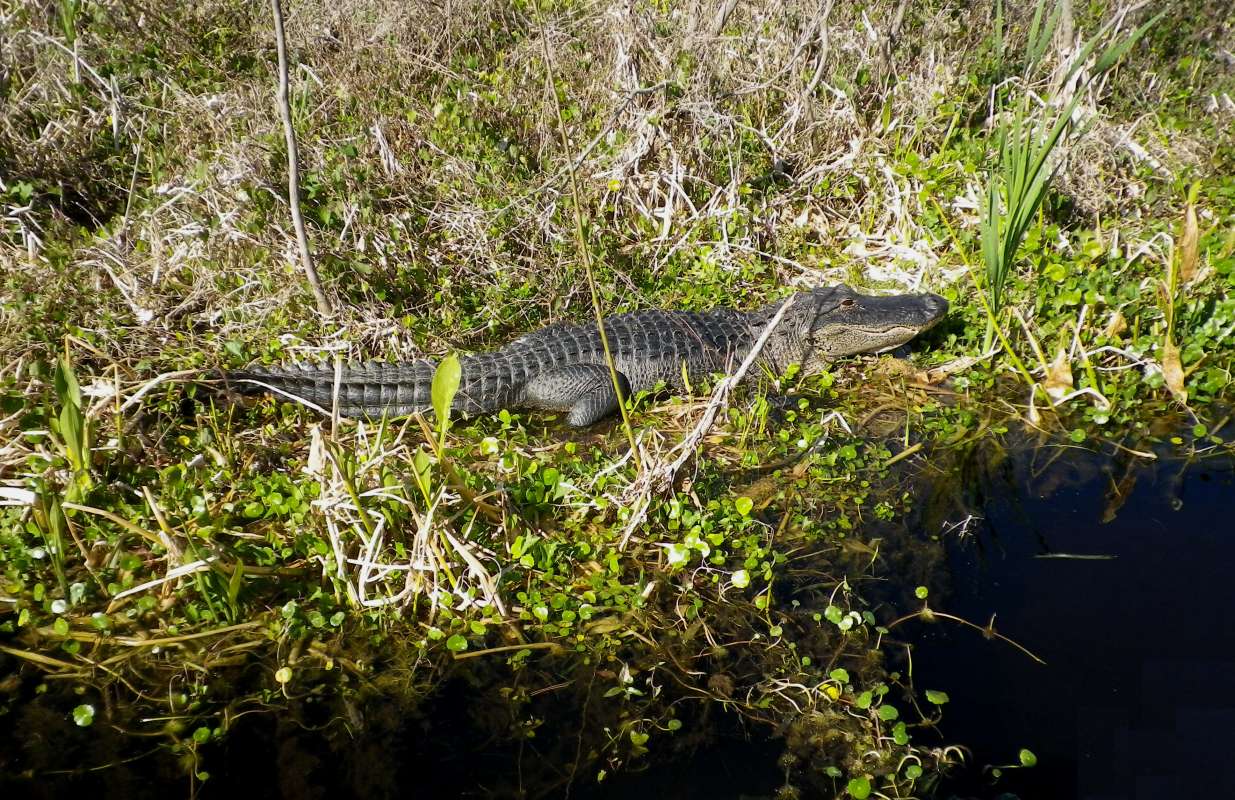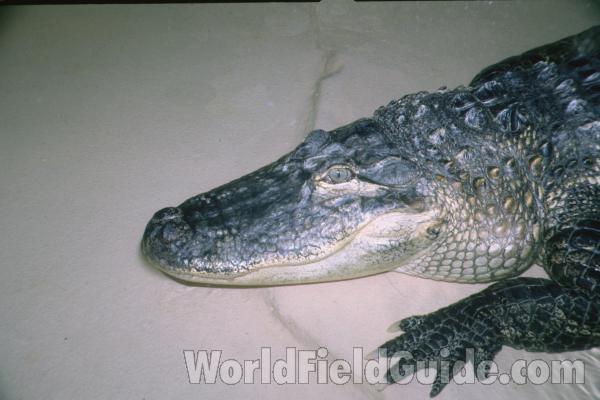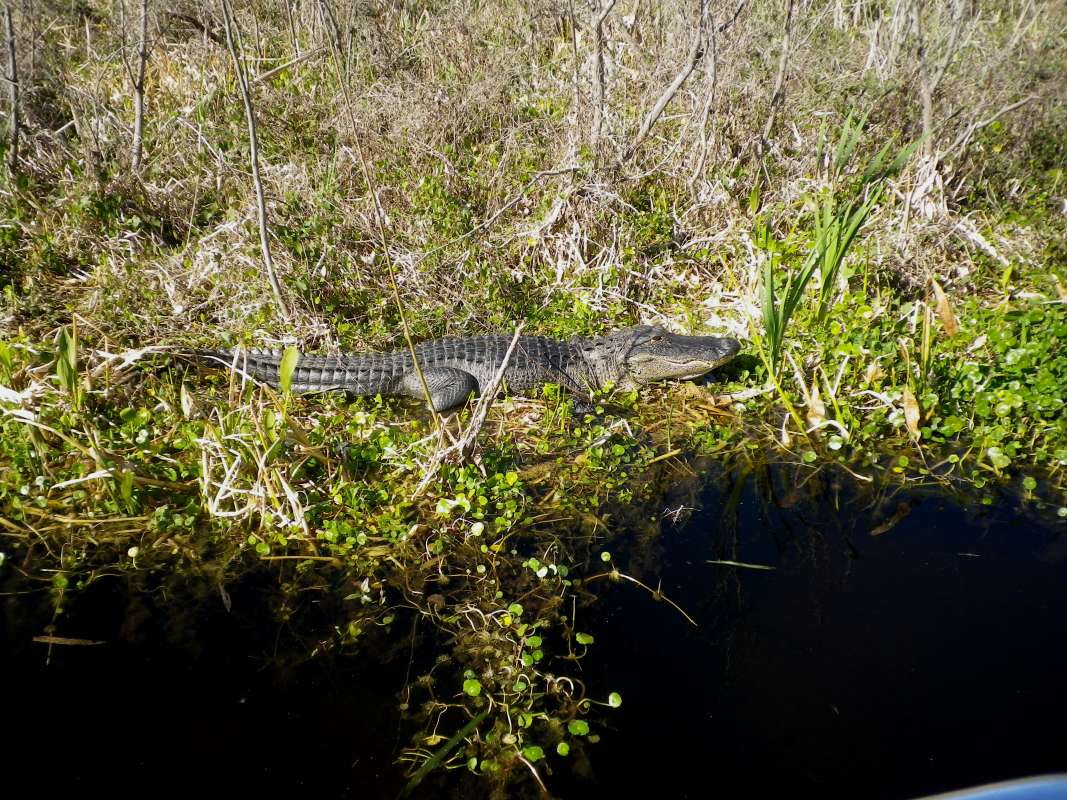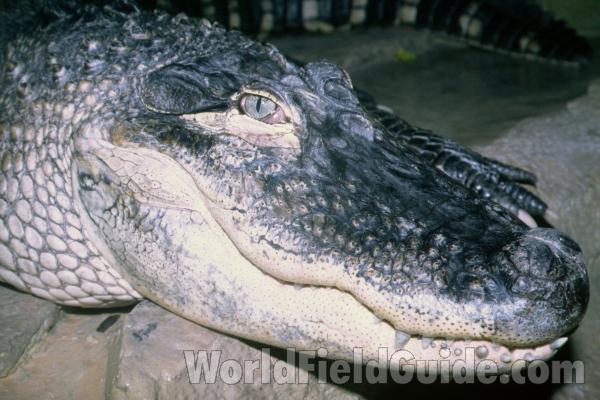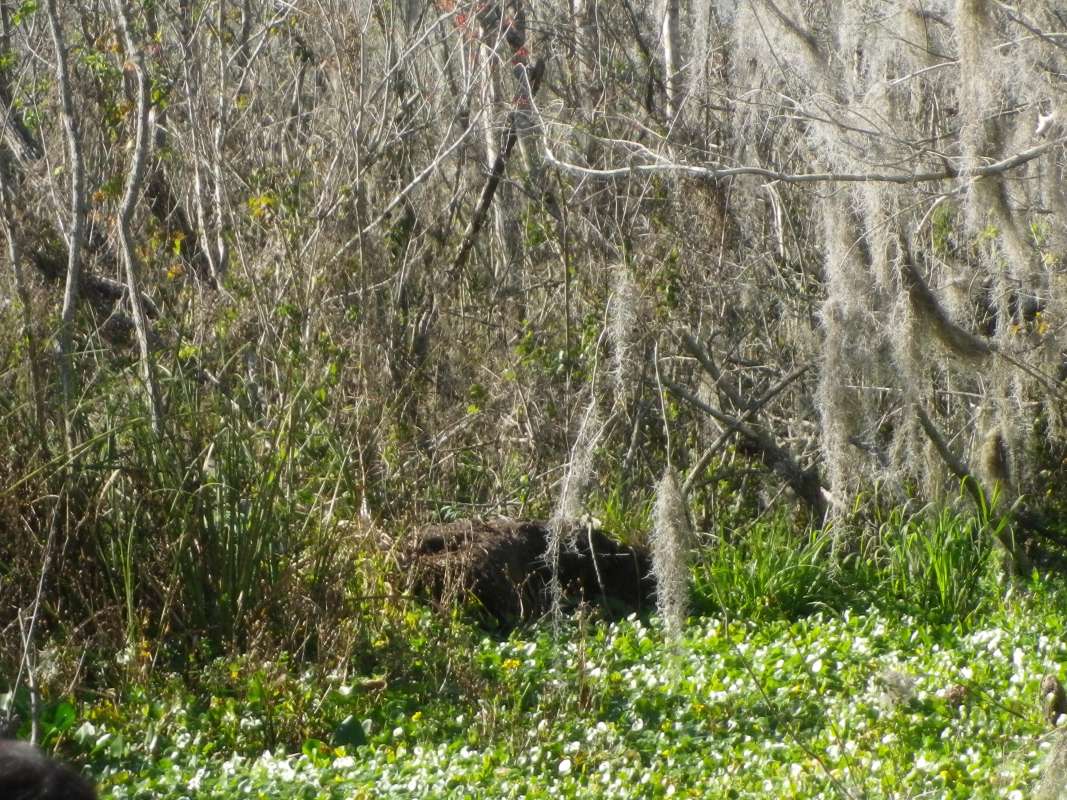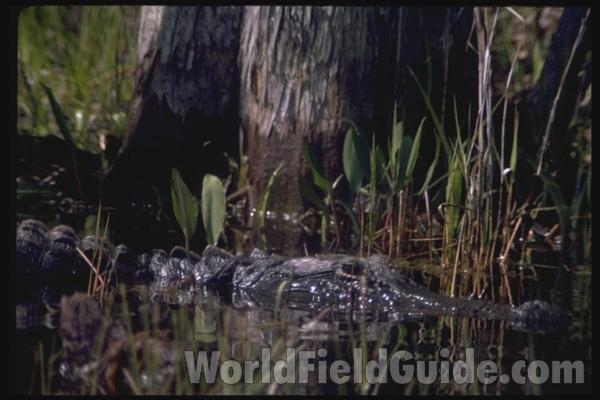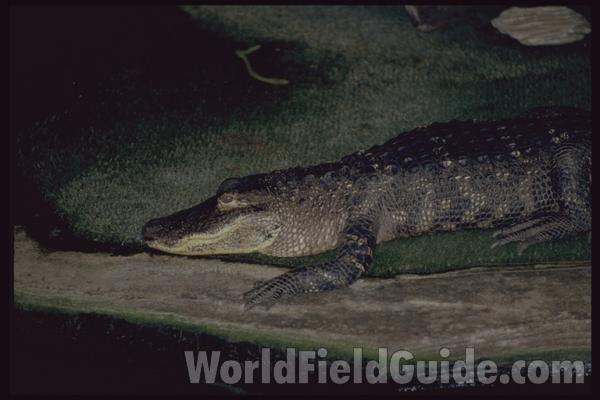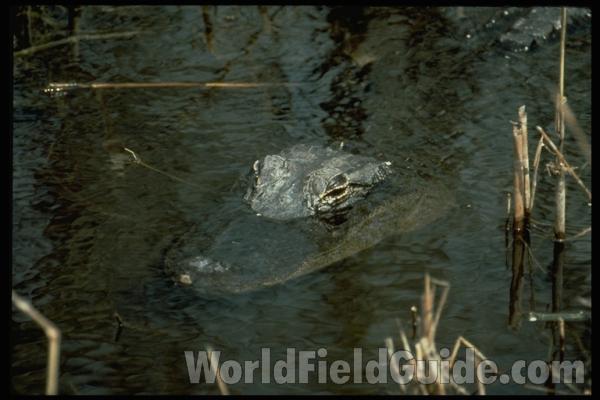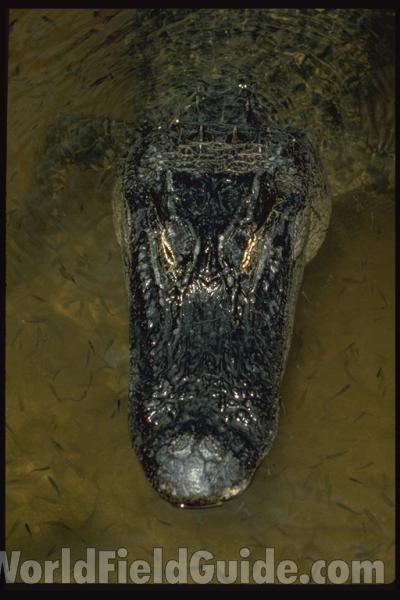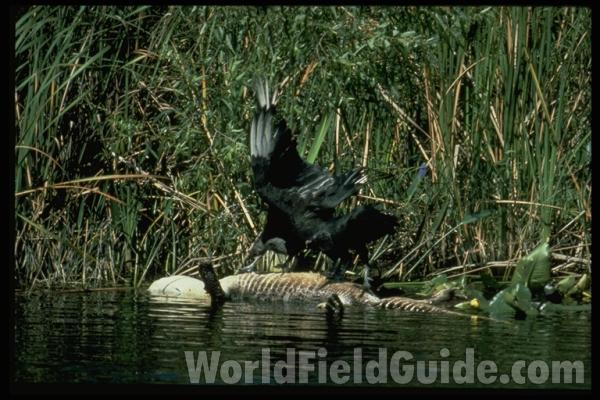SPECIES INFO
American Alligator (Alligator mississippiensis) is found throughout Florida, south Georgia, Louisiana, and southeast Texas. It is also found near the coast in North and South Carolina and in southern Arkansas. Previously very common throughout its range, commercial hunting has depleted its numbers to a few members. Legal protection has had a positive impact and the populations are growing. Alligators feed primarily on fish. A large specimen is about twelve feet in length. Authentic records from years ago point out that these animals can grow to eighteen or nineteen feet in length.
Although Clifford Pope, in his book on reptiles, states that alligators are not dangerous, stories abound among farmers in northern Florida of alligators that will attack cattle when the ponds are dried up and the fish dead or depleted.
We have added a textual column in three parts from Chambers Encyclopedia from 1888 as we found it interesting reading. Yes, the taxonomy has changed, but certain facts remain.Alligators and Caimans (Family Alligatoridae) form a natural group that are found in the tropics of the New World, the exception being the Chinese Alligator which is found in China. The species are as follows:
Alligator mississipiensis - South eastern North America
Alligator sinensis - Very local in eastern China
Caiman crocodilus - Much of tropical South America
Caiman latirostris - Much of eastern South America
Paleosuchus palpebrosus - Much of northern South America
Paleosuchus brigonatus - North of equator in South America
Melanosuchus niger - North of equator in South America
Alligator and Crocodile group (Order Loricata) is comprised of a small number of species of very large reptiles. They have very large mouths with razor-like teeth. Another characteristic is their very large tail that is used in swimming and as a tool to catch their prey. They all can raise themselves up on their legs and run very quickly. This group evolved in the time of the dinosaurs, but has some modern developments like a four chambered heart.
(Some taxonomists place all of the living members of this order into a single family, and then divide that family into three subfamilies. Here all of the living species have been placed into three families.) There are about 22 species in this group.
Reptiles (Class Reptilia) are an ancient group of scaled chordates. These scales may be permanently joined, as in the turtles, or flexible, as in the snakes. Reptiles are land-based. Their eggs are laid on land and the young are air breathing.
In the Great Big Book of Snakes and Reptiles published in 2014, they noted that there are more than 7,000 species of reptiles alive today.
Backboned Animals (Phylum Chordata) are the most advanced group of animals on earth. These animals are characterized by having a spinal cord or backbone. Most members have a clearly defined brain that controls the organism through a spinal cord. Fish, amphibians, reptiles, birds, and mammals are in this phylum.
Currently, some taxonomists believe that the fish should be divided into two groups (sharks and regular fishes) and that there are some other primitive groups in the phylum such as hagfish or lampreys.
Animal Kingdom contains numerous organisms that feed on other animals or plants. Included in the animal kingdom are the lower marine invertebrates such as sponges and corals, the jointed legged animals such as insects and spiders, and the backboned animals such as fish, amphibians, reptiles, birds, and mammals.
